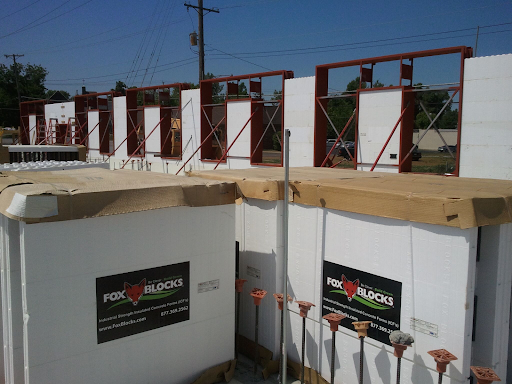
How to Design a Structure that Minimizes Virus Transmission in the Workplace

The COVID-19 pandemic has made clear to businesses the significant impact that an infectious disease can make on their workplaces. COVID-19 closed most office buildings, confining many workers to home offices. Fortunately, the development of a safe vaccine gives companies hope that they may soon safely open up their workspaces. However, to ensure worker safety and reduce future operational risk, companies must explore design solutions that minimize the transmission of viruses and other infectious diseases, like the flu and future pandemic-scale infections.
6 Design Features to Minimize Virus Transmission in the Workplace
Workplace disruptions from the spread of infectious diseases can impact a business's success, increasing employee sick days and lowering net profits. Therefore, companies should strive to ensure a safe environment for their employees by designing workspaces that create a healthy indoor environment and minimize virus transmission between exposed surfaces and individuals.
1. Managing Humidity with the Workspace
Managing humidity within a workspace protects workers from viral infections and decreases airborne microbial transmissions. Dry air dehydrates your mucus membranes and skin, allowing particles to penetrate deeper into your respiratory system, leaving you more susceptible to infections. Dry air also reduces particle deposition, allowing ultrafine particles to remain in the air longer, increasing the chance of airborne transmission of viruses. Furthermore, damp air produces unhealthy mold.
Maintaining a relative humidity of 40 to 60 percent in a workspace stops the harmful impacts from dry or damp air. This optimum humidity also decreases viral infectivity by disrupting the viruses’ outer membrane.
How Fox Blocks ICFs Help Maintain Proper Humidity

In conjunction with a good ventilation system, airtight Fox Blocks insulated concrete form (ICF) walls keep humidity levels in a healthy range of 40 to 60 percent, minimizing employee infection rate and reducing airborne microbes and mold in a workspace.
The Fox Blocks ICF Series includes a vapor retarder that contributes towards moisture-resistance for above- and below-grade walls. Fox Blocks ICF Series also creates energy-efficient, disaster-, and pest-resistant buildings with excellent indoor environmental quality. The Fox Blocks Series comes in various shapes that include two pieces of 1.5 pcf density modified 2 ⅝ inches expanded polystyrene (EPS) foam panels.
2. Increase Ventilation

Increasing the ventilation (the amount of outdoor air coming indoors) can lower airborne viruses' concentration within a workspace, protecting the workers. Several ways to improve ventilation include:
Mechanical features (HVAC systems) that bring outdoor air into the building.
Increase natural ventilation through open windows, doors, and attic, kitchen, and bathroom fans.
Stack ventilation and biopic design further enhance ventilation.
Stack Ventilation
Commercial buildings often do not allow open windows; however, they can still achieve natural ventilation through buoyancy and airflow. Simply put, buoyancy allows less-dense hot air to rise inside the building, creating a vacuum that pulls cooler fresh air from below.
Stack ventilation relies on opening and closing ventilators that allow air to enter at the building's bottom and exit at the building's top. These ventilators range from simple open and close switches to integrated energy management systems with temperature, carbon dioxide, weather sensors, and controls to interface with the building climate control.
Biophilic Design
Biophilic design aims to maximize small spaces by incorporating large operable windows that provide a more profound sense of connection to the outdoors. Biophilic design seeks to connect interior workspaces to daylight and nature, improving air quality, resulting in healthier, more productive employees with more robust immune systems.
3. Include More Water Stations
Frequent hand-washing can significantly mitigate disease transmission, reducing respiratory illness by 16 to 21 percent. Designing workspaces with self-contained hand-washing stations and hand sanitizer dispensers in high-traffic areas (copy rooms, waiting areas, lobbies) can tremendously reduce transmission in the workspace, keeping your employees healthy and reducing sick days.
4. Touchless Workspaces Reduce Surface-to-Person Transmissions
High-touch areas of an office can contain significant levels of viral contamination. A study published in the American Society of Microbiology found that in just 2 to 4 hours, a contaminated doorknob can transmit a virus to 40 to 60 occupants of a building.
To reduce opportunities for surface-to-person transmission of disease, workspace designers should limit shared touchpoints. Design features that minimize touch transmission include touchless switches that open doors, voice-activated elevators, automatic blinds, sensor-flush toilets and faucets, and doorless bathroom entry systems.
5. Select Products that Quickly Decay Viruses

Not all building products offer a lasting home for viruses. For instance, the virus responsible for COVID-19 can survive for two to three days on plastics and stainless steel. In contrast, the virus can only survive 24 hours on cardboard and 4 hours on copper. Natural unfinished wood surfaces reduce some viruses' abundance more quickly than other common indoor surfaces, such as stainless steel or plastic. Applying anti-viral coatings to design elements like faucets, door hardware, and shades also helps prevent multiplying viruses.
6. Screen Visitors with Integrate Sensor Technology
To protect those already in the building, design workspaces with Infrared Fever Screening Systems (IFSS) to screen visitors for elevated body temperature before entering the space.
Why Create a Workplace that Minimizes Virus Transmission?
Creating a healthy workplace that minimizes virus transmission improves productivity and reduces absenteeism, turnover, workers' compensation, and medical claims — ultimately protecting your employees' well-being and improving your company's profits.
Fox Blocks has several solutions to minimizing virus transmission in the workplace.
Create optimal humidity in a workspace with products like FOX Blocks ICFs to decrease the viral infection rate, lessen the risk of airborne transmission of viruses, and eliminate unhealthy mold.
Increase the volume of outside air coming into a building in order to reduce the contagious virus's indoor spread to workspaces.
Design with water stations in heavily trafficked areas, touchless workspaces, virus-resistant building products, and IFSS technology to reduce microbial transmission.
Contact Fox Blocks professionals for help designing a structure that minimizes virus transmission in the workplace.